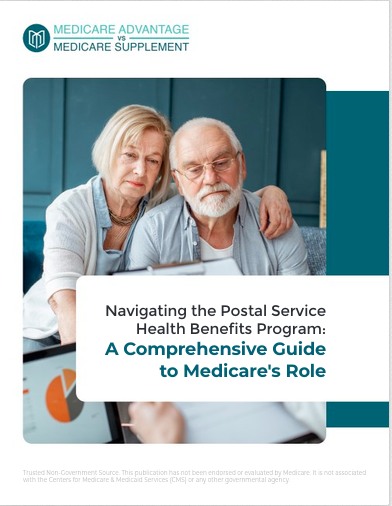Key Takeaways
-
The new $2,000 cap on out-of-pocket prescription drug costs under Medicare Part D provides significant financial relief for beneficiaries in 2025.
-
Understanding the updated phases of Medicare Part D will help you better plan for your healthcare expenses throughout the year.
What Changed in Medicare Part D for 2025?
Big changes have arrived in 2025 to make Medicare Part D more accessible and predictable. The most impactful update is the introduction of a $2,000 annual cap on out-of-pocket prescription drug costs. This reform eliminates the infamous “donut hole” and simplifies the coverage process, ensuring you have fewer surprises when managing your healthcare budget. This cap is a game-changer, especially for those who require high-cost medications or have ongoing prescription needs.
The new rules also allow for a smoother payment experience. Medicare now offers a Prescription Payment Plan, enabling you to spread your out-of-pocket expenses across the calendar year in manageable monthly payments.
To take full advantage of these changes, it’s important to understand how Medicare Part D works in 2025 and what steps you need to take.
Medicare Part D’s Structure: Simplified for 2025
The elimination of the donut hole simplifies Medicare Part D. Instead of navigating four phases of coverage, you now have three clear stages:
1. Deductible Phase
This is the starting point for your prescription drug coverage. You are responsible for 100% of your medication costs until you meet the annual deductible. For 2025, this deductible is capped at $590. Once you hit this amount, you transition to the next phase.
2. Initial Coverage Phase
During this phase, you share the cost of your prescriptions with your plan. The percentage you pay depends on your specific plan’s cost-sharing terms. This phase continues until your total drug costs—what you and your plan pay combined—reach $5,030.
3. Catastrophic Coverage Phase
Here’s the big update: once you’ve spent $2,000 out-of-pocket for covered drugs, your plan steps in to cover the rest of your medication costs for the year. Unlike past years, there’s no 5% coinsurance in this phase. This is a massive win for beneficiaries who previously faced ongoing costs for high-priced drugs.
How the $2,000 Cap Benefits You
Predictability for Your Budget
One of the most frustrating aspects of managing healthcare costs is uncertainty. With the $2,000 cap in place, you now know the maximum amount you’ll spend on covered prescriptions each year. This transparency makes it easier to plan your finances without worrying about unexpected expenses.
Relief for High-Cost Medications
If you rely on expensive medications, you’ve likely felt the financial strain in previous years. The new cap ensures that once you hit $2,000 in out-of-pocket spending, you won’t have to pay anything further for your prescriptions. This can mean saving thousands of dollars annually for those on high-cost drugs.
Simpler Navigation
The elimination of the donut hole means fewer complex calculations and fewer surprises mid-year. You’ll progress through the coverage phases more smoothly, with clear limits on what you’ll owe.
Spreading Costs with the Prescription Payment Plan
Managing out-of-pocket costs can still be challenging, even with a $2,000 cap. To make this easier, Medicare now offers a Prescription Payment Plan. This program lets you divide your expenses into equal monthly payments throughout the year, rather than paying large sums all at once.
How It Works
-
You opt into the program through your Part D plan.
-
Your plan calculates your expected out-of-pocket costs for the year.
-
Monthly payments are set up, allowing you to spread costs evenly.
This option is particularly helpful for those on fixed incomes, as it reduces the financial burden of paying for expensive prescriptions upfront.
Key Dates and Deadlines to Remember
Medicare Open Enrollment Period
-
Dates: October 15 to December 7
-
Why It Matters: This is your annual opportunity to review and switch Medicare plans, including Part D. Use this time to ensure your plan aligns with the new $2,000 cap and your medication needs.
Mid-Year Notifications
-
Starting between June 30 and July 31, 2025, you’ll receive a personalized notification detailing your unused supplemental benefits. This helps you keep track of what’s available and encourages you to make the most of your plan’s offerings.
Tips for Maximizing Your Part D Benefits
1. Review Your Current Plan
Check your plan’s formulary—the list of covered drugs—to ensure it includes your medications at a cost you can manage. While the $2,000 cap applies to all Part D plans, other factors like premiums and deductibles can vary.
2. Use Preferred Pharmacies
Many Part D plans offer lower copayments and coinsurance rates when you use in-network or preferred pharmacies. This can help you save money even before reaching the $2,000 cap.
3. Track Your Spending
Keep an eye on your out-of-pocket costs throughout the year. Once you hit $2,000, you’ll transition to catastrophic coverage. Knowing where you stand helps you plan your finances more effectively.
4. Ask About Generic Alternatives
If your medication costs are high, talk to your doctor about generic or lower-cost alternatives. These options can help you reach the $2,000 cap more slowly, preserving your budget for other healthcare needs.
5. Consider State Assistance Programs
Many states offer assistance programs to help with prescription drug costs. Even with the $2,000 cap, these programs can provide additional financial relief.
Common Questions About the $2,000 Cap
Does the $2,000 Cap Include Premiums?
No, the cap only applies to out-of-pocket expenses for covered prescription drugs. Premiums, deductibles, and other costs are calculated separately.
What Happens If My Plan Doesn’t Cover My Medication?
If your prescribed medication isn’t covered, it won’t count toward the $2,000 cap. Always check your plan’s formulary to ensure your drugs are included.
Can I Switch Plans Mid-Year?
In most cases, you’re locked into your plan for the calendar year unless you qualify for a Special Enrollment Period. Be sure to choose a plan that fits your needs during the Open Enrollment Period.
The Importance of Staying Informed
The 2025 updates to Medicare Part D are a huge step forward in reducing prescription drug costs. However, staying informed about your plan’s details is essential. Read your plan’s Annual Notice of Change (ANOC) letter to understand any updates to premiums, deductibles, and formularies. Taking the time to review this information can save you money and ensure you’re fully prepared for the year ahead.
Embracing a New Era of Medicare Coverage
The new $2,000 cap on out-of-pocket prescription drug costs transforms Medicare Part D, providing much-needed financial relief and clarity. By understanding these changes and planning accordingly, you can make the most of your benefits in 2025 and beyond.










